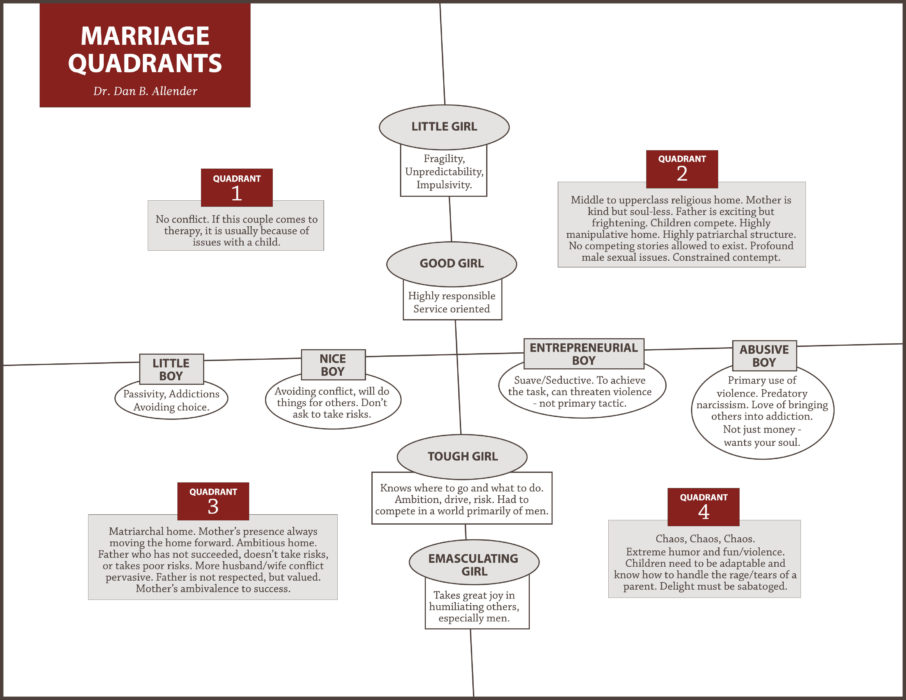The Marriage Quadrants, Part Two

This week on the Allender Center Podcast, Dr. Dan Allender continues our series about the Marriage Quadrants, a theoretical framework of marriage that informs how he engages and works with couples. For an overview of what we are engaging in this series, you can listen to last week’s episode. And for a visual representation of the categories Dan is discussing, you can view the Marriage Quadrants PDF at the bottom of this post.
In this episode Dan looks at Quadrant One, where we find marriages that are marked by comfort, convenience, control, and safe routines. These couples often lead faithful, steady, churchgoing lives—they are “nice” people who project an appearance of calm and a lack of disruption. “The marriage in Quadrant One is a marriage lived on the couch, watching TV, watching other people live,” says Dan.
Quadrant One couples do not often seek marriage counseling, so if they are seeking help for family issues it is typically because of a child whose behavior is concerning them. While children of this type of marriage are usually polite, respectful, and predictable, there is often one “problem child” who does not conform to the family norms and expectations. Dan argues that this child, the one who dares to rock the boat, is actually the most honest and authentic person in the family. They see the anxiety and anger that lurks beneath the surface of the seemingly calm, conflict-free marriage, and they refuse to pretend otherwise and go through the motions.
This kind of world requires a level of disruption.
“This kind of world requires a level of disruption,” says Dan, and the “rebellious child is often the only one with the courage for it. Once that disruption is present, behavior modification or symptom management will not lead to meaningful, lasting change if that is the end goal. Instead, Dan suggests, when we engage marriages like this as pastors, therapists, or close friends, our challenge is instead to invite a recognition of the patterns of annulling desire and an exploration of the avoidant attachment that is so dominant in these marriages. To that end, we are called to name disruption as a gift, one that has the potential of stirring up new experiences of life, desire, and hope.
“Whatever has allowed them to come to believe that highs and lows are something to avoid, that extremity is actually something of the domain of evil. Whatever historically or religiously has allowed them to think that desire is dangerous needs to be disrupted. […] This is a marriage that knows very little of the death of Christ, and very little of the resurrection of Christ. Those are points of extremity.”

